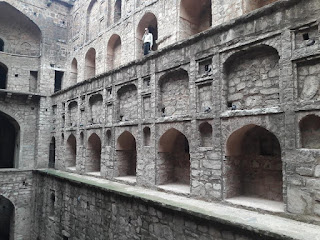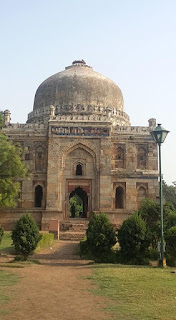Delhi Heritage Trail : 25
Ugrasen ki Baoli
This stepwell in the heart of Delhi near Connaught Place on Hailey Road is an example of water conservation in the good olden days. This Baoli or stepwell was supposed to be constructed by the legendary Agarwal communitiny king Agrasen. It was renovated by the rich Agarwal community people during Tughlak period in 14th century.
The stepwell is 60 meter long and 15 meter wide. One has to climb down 108 steps made of rock stones to reach down below were a circular well filled with water is there. It is a three storeyed structure with arched cubicles on either side. The place is a refuge for Bats and as you go down an eerie silence occupies the place and it is cool down there too. It is said that it is a haunted place after sunset and people don't dare to venture. Mostly youngsters can be seen hanging around this place.
It is a heritage site under Archaelogical Survey of India.


























